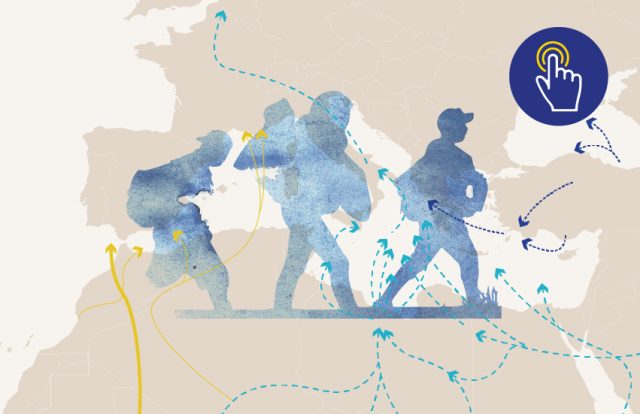
European Union policy related to migrants and refugees amounts to one of the most significant expectations for the new year in terms of key developments. On 11 December, the European Parliament published a study on new approaches to labour market integration, which deserves a close analysis.
Its author, Prof. Francesco Fasani of the University of Milan, starts by pointing out some key facts: two years ago, total immigration in the European Union corresponded already to 9.2% of its population and non-EU immigration accounted for 6.1%.
In absolute terms, as of 1 January 2023, the largest numbers of non-nationals residing in EU Member States were found in Germany (12.3 million), Spain (6.1 million), France (5.6 million), and Italy (5.1 million). Together, these four Member States accounted for 70.6% of all non-nationals living in the EU.
Prof. Fasani estimates illegal immigration between 1 and 3 million people. Such level of undocumented migrants in the EU seems rather low (2.4%).
Employment status is generally regarded as the single most important indicator of labour market (economic) integration; however, job quality is also a key element of the integration process. Such job quality includes wages, working conditions, contract type, working hours, and the alignment of jobs with workers’ skills and qualifications.
The unemployment rate of non-EU citizens was 12.2% average as of 1 January 2023. Nevertheless, there are huge disparities in employment of non-EU citizens among Member States, with rates ranging from 87.4% in Malta to 50% in Belgium, where every other non-EU citizen is unemployed!
In order to economically integrate immigrants, Prof. Fasani refers to nine challenges: language, educational and employability barriers; residential segregation; limited bargaining power; discrimination and hostile attitudes; welfare state access; and migration and asylum policy design.
Educational obstacles include failure to recognise foreign qualifications, particularly in regulated occupations, but also non-regulated.
Employability barriers can be overcome through labour market integration individualised plans, which in turn reduce impact on welfare costs.
Residential segregation is a negatively connoted term to describe ethnic enclaves in the host nation. On the one hand, it creates positive networks in the short term, but also the risk of a ghetto in the midterm, with potential effects on neighbourhood security and crime that Prof. Fasani seems to ignore.
Bargaining power has a correlation with wages, an element of job quality, as well as with other working conditions. Employer-sponsored visa schemes can provide employers with monopsonistic power and eventually lock migrants in a single job.
To reduce discrimination, Prof. Fasani proposes affirmative action, though he fails to provide any objective data on advantages and negative effects of such a polemic approach. Incidentally, a euphemism for affirmative action is “diversity” promotion. Another option suggested by the study’s author is the legal imposition of blind hiring, also called “anonymisation”, once more contrary to the principle of free market.
Prof. Fasani states that migrants in the EU contribute more to public finances than they receive. On the other hand, he recognises that, at least in the short term, welfare benefits may lower employment rates by reducing work incentives. No quantitative data is provided for either thesis.
The study promotes the legalisation of migrants and refugees as policy design, but rather through naturalisation and not the granting of temporary visas. Deportation is considered illegal, inhume and non practical.
Finally, Prof. Fasani also promotes a policy towards asylum seekers through placement in strong labour market condition areas and short periods for asylum granting.
No wonder that the study defends the role of social partners and “other private organisations”. This is a third euphemism in the text, corresponding in this case to NGOs, whose business in the EU ultimately depends on the proliferation of analysis like that of Prof. Fasani.
Source of image: Council of the European Union



 Subscribe
Subscribe